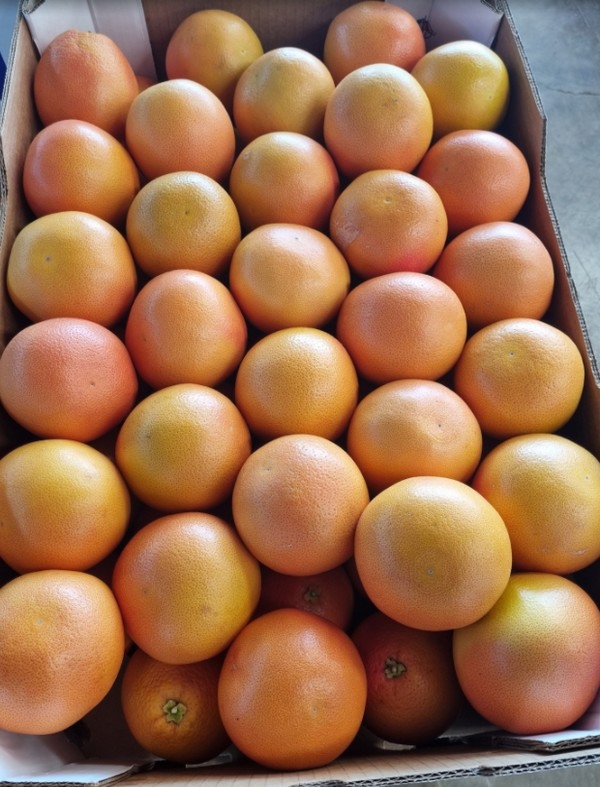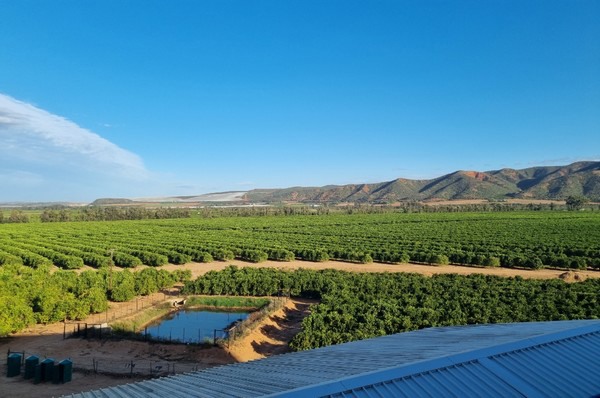"The citrus from South Africa and Peru are selling well," begins Randolf Aaldijk of the Dutch company Origin Fruit Direct (OFD), summarizing the overseas citrus market in mid-June. Retail programs - which account for about 80% of the market - are running well. "Many programs have started with overseas, especially South African, fruit and those sales are problem-free." Aside from the retail programs, he notes mid-June’s warm weather made for quieter trade, with especially grapefruit struggling. Yet, it boosted demand for cool drinks, benefiting the juice industry - an OFD focus along with retail programs - and demand for lemons and limes. "Retail keeps going, but free trade is calming down significantly," says Randolf.
Dependent on supply
Randolf has recently seen less demand for early overseas citrus varieties like Satsumas, while the demand for the late Navel varieties, including Cambria, Autumn Gold, and Witkrans, has increased. "The late varieties taste better and have become increasingly popular in recent years. As a result, the seasons are running longer." He notes that the trend appears to depend on supply. "If, like this season, there's little European citrus or that season ends earlier, I don't see that trend. Everyone wants Satsumas at excellent prices. So that trend depends on the season," explains Randolf.
He says the overseas citrus is of good quality. "These are natural products, so something can always happen, but the quality's generally good. The grapefruit season, for example, is excellent with beautiful, brightly colored, good flavored fruit." Randolf adds that growing conditions in South Africa are good, giving the fruit good size and coloration.
Tough times
While this year's growing conditions are good, South African growers have faced many challenges in recent years. Things like the pandemic, logistical issues, and rising costs are taking their toll. "South African growers have had two bad years, and if a third bad season follows, plenty will go under. They have to genuinely earn something this season. South African growers are having a tough time," says Aaldijk.
Added to that is climate change, which also causes issues, he points out. "There, drought alternating with heavy rain results in supply problems." For instance, the heavy rains in mid-June in the Western Cape damaged bridges and roads, rendering some unusable.
The mandated cold treatment regulations for export to the European Union are no help to the growers either. "That certainly doesn't aid smooth exports and imports," Randolf points out. Not only does this cause growers to incur higher costs, there's the logistical aspect, too. "As long as the volumes are slightly lower, it's not a problem yet. But what will happen when there's major congestion? Many of our exporters have it under control as long as the shipping lines are on time, ensuring the fruit gets out of the cold treatment on time. If there's a delay somewhere, they get stuck. When everything flows right, it's under control, but it's costly."

No alternative
This development has led South Africa to turn its gaze to markets other than the EU, and Randolf sees a change in the citrus export stream. "They're sending less to Europe, and more to other continents, to spread the risk," he says. Still, Randolf notes that many exporters invest to meet EU import restrictions and phytosanitary measures. "It's vital to keep sending citrus to Europe, so they're working hard on that."
Conversely, Europe cannot do without importing South African citrus, and Randolf sees no immediate alternative. "It's not like another country can fill in. Argentina, for example, used to supply plenty of lemons and grapefruit, but that's becoming less and less," he explains. Aaldijk points to high cost prices and Citrus Black Spot as reasons for those declining exports from Argentina. This disease reduces both the fruit's quantity and quality. "South Africa is, for instance, filling in more of the lemon gap, and there's not a true alternative."
Luxury item
Regarding citrus, Europe and South Africa are, therefore, interdependent. So the required measures are being taken, but that leads to higher costs. And that's challenging. "The costs between growing and retail have risen sharply, leading to sky-high prices," Randolf continues. That puts pressure on growers. A tricky situation, he admits; growers must keep surviving while also keeping the product affordable for consumers. "You don't want citrus to become a luxury item that's too expensive and which shoppers ignore. That's happening a bit now.”
That is why, where costs are concerned, OFD focuses on maximum efficiency. "The chain has to work more efficiently to achieve the right balance," Randolf points out. He names sea freight as the most significant cost, noting that its cost has doubled or even tripled in recent years, costing growers tremendously. Randolf says supply and demand partly caused the high sea freight costs.
Those are now stabilizing at a high level, but he suspects market conditions cannot directly explain some of the increases. A development that is not without consequences. "We have to pass those extra costs on to consumers, and that could eventually make the products too expensive, pricing them out of the market. Then exporting becomes too pricey, and the shipping companies, too, lose trade," Randolf concludes.
For more information: 
Randolf Aaldijk
Origin Fruit Direct
Tel.: +31(0)88 244 93 00
[email protected]
www.originfruitdirect.nl

